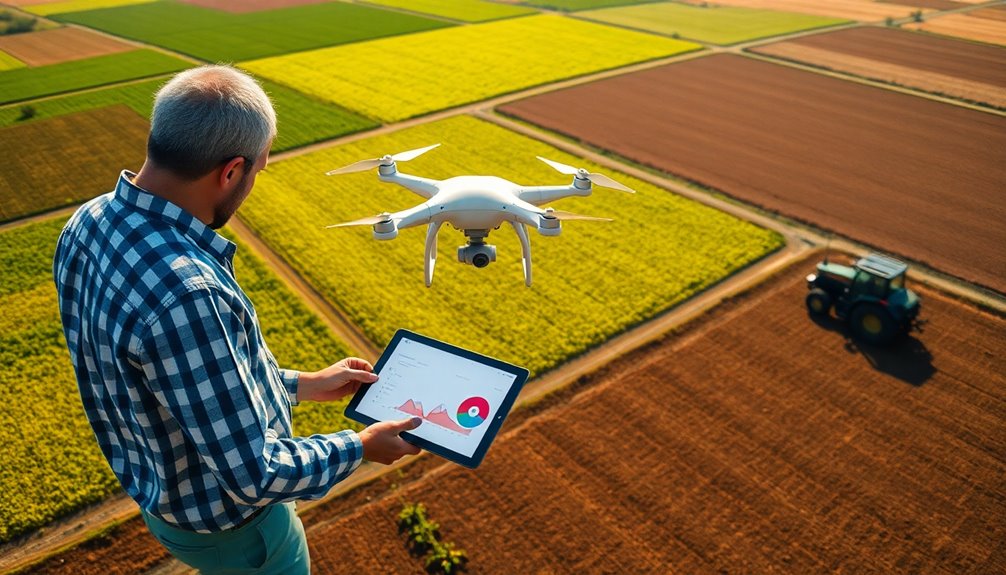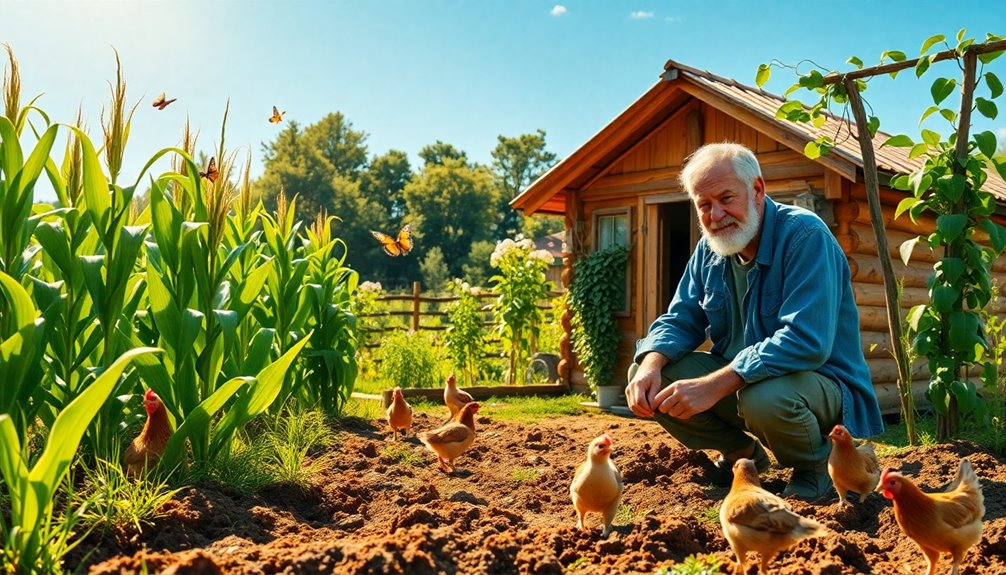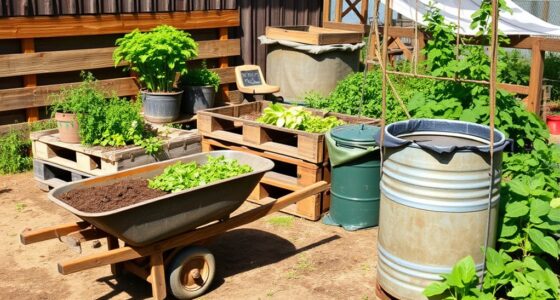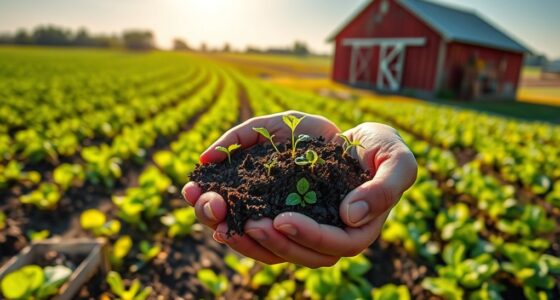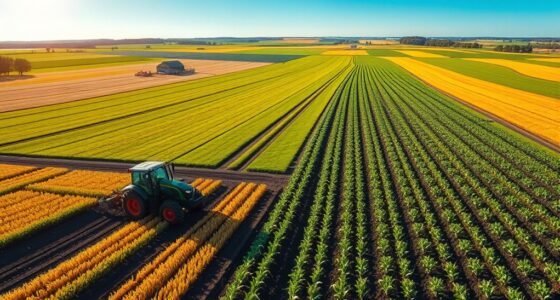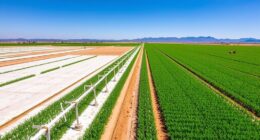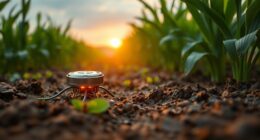E-farming is all about using digital technologies to transform agriculture. You can improve efficiency and yield by incorporating tools like drones, sensors, and AI into your farming practices. With real-time data at your fingertips, you can make quicker, informed decisions that support sustainability and minimize waste. This digital revolution not only boosts crop production but also connects you to global markets, enhancing your competitiveness. As you explore this world of smart devices and precision farming, you might uncover the potential to reshape your agricultural approach for a better future.
Key Takeaways
- E-Farming integrates digital technologies like drones and IoT to enhance agricultural efficiency and sustainability.
- It utilizes data-driven decision-making for real-time monitoring, improving crop yields by up to 20%.
- Smart devices and sensors optimize resource use, streamline operations, and reduce waste in farming practices.
- Enhanced internet connectivity enables remote monitoring and access to global markets, fostering collaboration among agricultural stakeholders.
- Challenges include digital literacy gaps and cybersecurity concerns, but future trends point to autonomous farming and AI-driven decisions enhancing productivity.
Definition and Importance of E-Farming
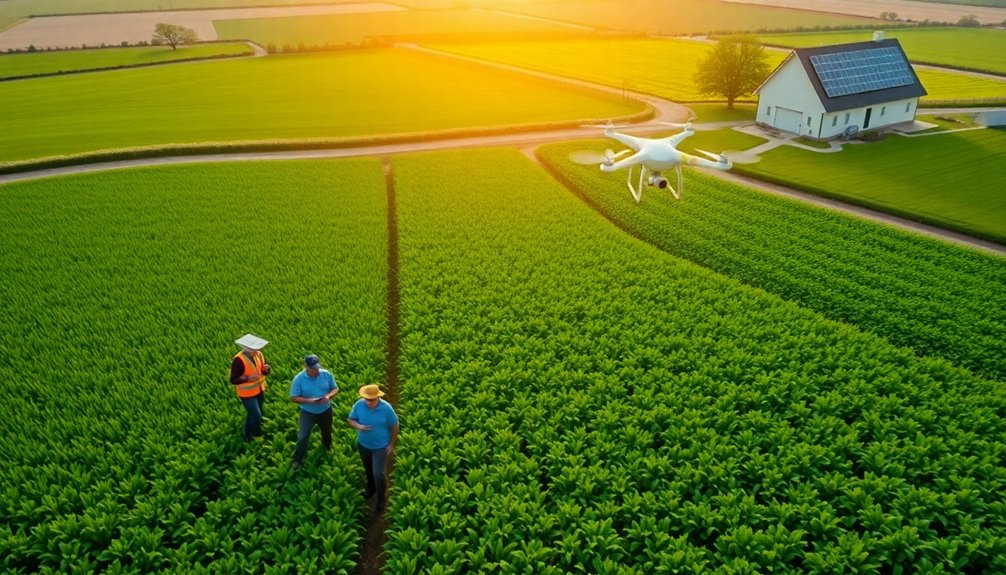
E-Farming, or Electronic Farming, is revolutionizing agriculture by integrating digital technologies like drones, sensors, and AI to boost productivity and optimize resource use.
This modern approach is essential for enhancing agricultural practices, as it promotes data-driven decision-making that tailors methods to specific field areas.
By leveraging IoT devices for real-time monitoring, you can identify issues quickly, ensuring timely interventions that improve overall farm health.
E-farming also supports sustainable practices, minimizing waste and environmental impact while maximizing crop yields.
With advanced agricultural technology, you're empowered to optimize resources effectively, adapt to market changes, and enhance productivity.
Fundamentally, eFarming represents a significant shift in traditional farming paradigms, paving the way for a more efficient and sustainable future in agriculture.
Advantages of E-Farming
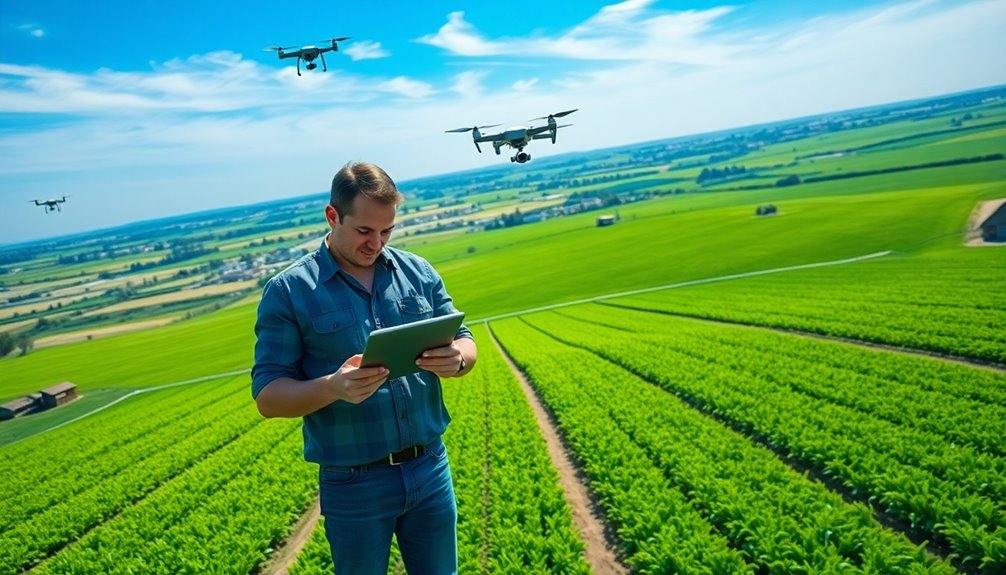
E-Farming offers you the chance to boost your crop yields while managing resources sustainably.
By using precision farming techniques, you can tailor your practices to specific areas, maximizing productivity and minimizing waste.
With the right tools, you'll not only enhance your farm's efficiency but also contribute to a more sustainable agricultural future.
Increased Crop Yields
In modern agriculture, the adoption of advanced technologies markedly boosts crop yields.
Here's how e-farming enhances your productivity:
- Precision Agriculture: By utilizing real-time data, you can increase crop yields by up to 20% through targeted applications of inputs.
- IoT Sensors: Monitoring soil moisture helps optimize irrigation, potentially raising yields by 10-15% while improving water efficiency.
- Drones for Crop Health: Early detection of diseases and pests allows for timely interventions, notably reducing crop loss.
Incorporating data analytics into your farming practices can result in better crop rotation strategies, leading to an average yield increase of about 15%.
Embracing e-farming technologies is essential for achieving higher crop yields and supporting sustainable agriculture.
Sustainable Resource Management
As you embrace advanced farming technologies, sustainable resource management becomes a key advantage of e-farming. Precision agriculture, powered by IoT sensors and data analytics, allows you to monitor soil conditions in real-time. This means you can apply fertilizers and pesticides more efficiently, reducing chemical runoff and environmental impact. Smart irrigation systems help you cut water usage by 10-20%, boosting economic efficiency. Drones provide aerial imagery for early detection of crop health issues, facilitating targeted interventions. Overall, e-farming practices can increase crop yields by up to 15% while minimizing resource waste.
| Benefit | E-Farming Feature | Impact |
|---|---|---|
| Sustainable Resource Use | Smart Irrigation Systems | 10-20% water reduction |
| Environmental Protection | IoT Sensors | Reduced chemical runoff |
| Increased Productivity | Data Analytics | Up to 15% higher crop yields |
Key Technologies in E-Farming
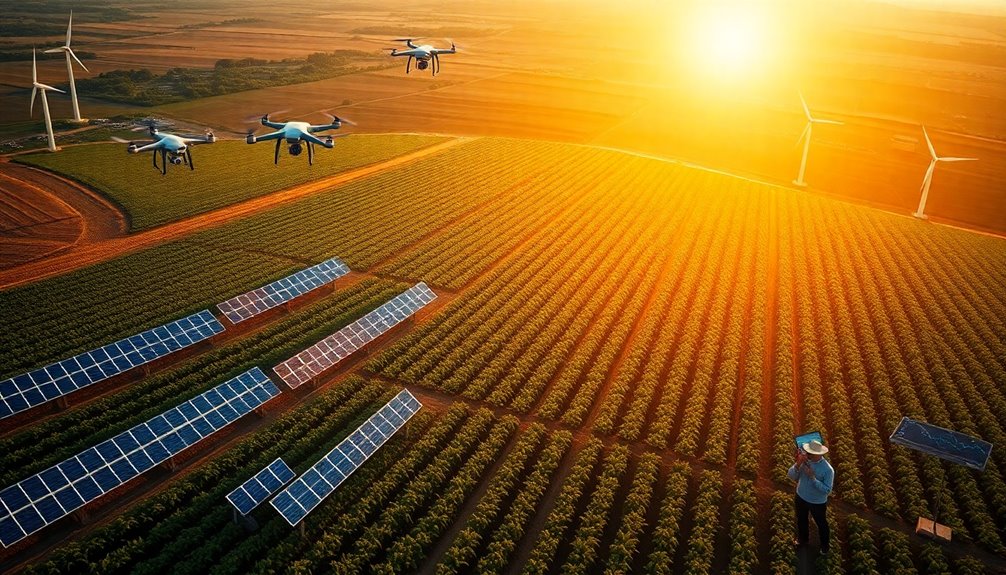
In e-farming, drones and IoT sensors are game changers for modern agriculture.
You can use drones for aerial imaging and precise crop dusting, while IoT sensors provide real-time data on soil moisture and environmental conditions.
These technologies not only enhance your ability to monitor crops but also support informed decision-making for better yields.
Drones in Agriculture
Drones are revolutionizing agriculture by providing farmers with advanced tools for monitoring and managing their crops. They enable you to collect real-time data, enhancing crop health assessments and improving decision-making.
Here are three key benefits of using drones in farming:
- Precision Agriculture: Drones equipped with multispectral sensors help identify crop stress and nutrient deficiencies, allowing for timely interventions.
- Operational Cost Reduction: By optimizing inputs like fertilizers and pesticides through targeted applications, you can greatly lower your operational costs.
- Enhanced Farm Efficiency and Sustainability: Drones facilitate data-driven decision-making, improving overall farm efficiency and promoting sustainable practices.
Additionally, the use of drones aligns with cloud computing technologies, enabling farmers to store and analyze large amounts of data effectively.
With these cutting-edge tools, you can transform your farming operations and embrace the future of agriculture.
IoT Sensors Utilization
A growing number of farmers are turning to IoT sensors to enhance their e-farming practices.
These devices measure critical environmental factors like soil moisture levels, temperature, and humidity, enabling you to make data-driven decisions for maximum crop health.
With real-time monitoring, you can quickly detect issues such as water stress or nutrient deficiencies, allowing for timely interventions that boost crop yields.
By implementing smart irrigation systems, you can automatically adjust water usage based on current soil moisture, reducing waste and improving resource efficiency.
Plus, IoT devices connect to mobile applications, giving you access to valuable data on the go.
Embrace the digital revolution and watch your farming efficiency and productivity soar. Additionally, utilizing renewable resources in conjunction with IoT technology can further enhance sustainability in agricultural practices.
Internet Connectivity's Role
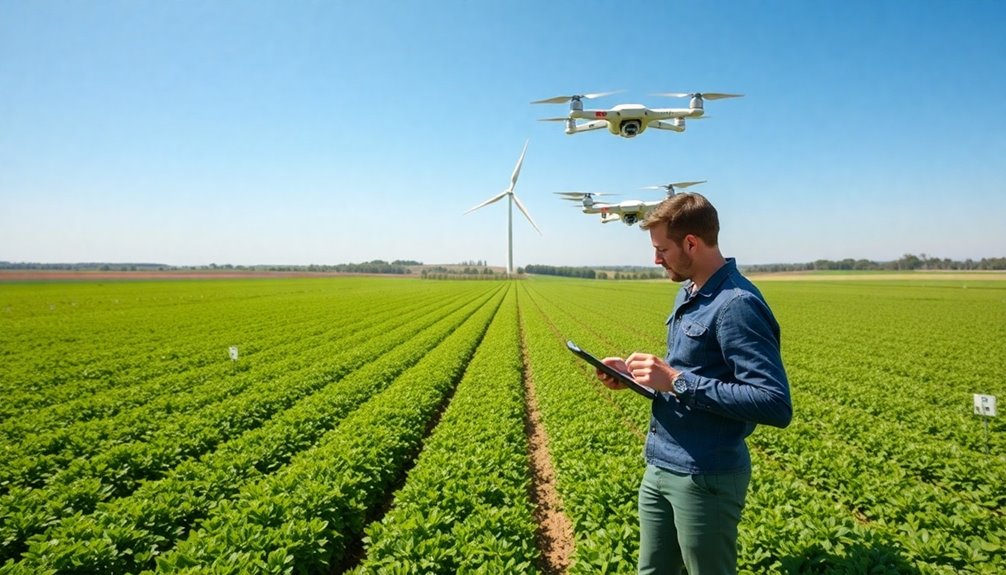
Internet connectivity plays an essential role in transforming agricultural practices today.
With improved access, farmers are embracing eFarming practices that enhance productivity and sustainability.
Here are three key benefits you can expect:
- Access to Real-Time Data: Mobile internet allows you to monitor your crops and livestock on-the-go, ensuring timely decisions.
- Remote Monitoring Capabilities: Satellite internet connects rural areas, enabling precision agriculture techniques and efficient farm management.
- Collaboration with Agricultural Stakeholders: Enhanced connectivity fosters better marketing strategies and resource sharing among farmers and experts.
Adoption of Smart Devices
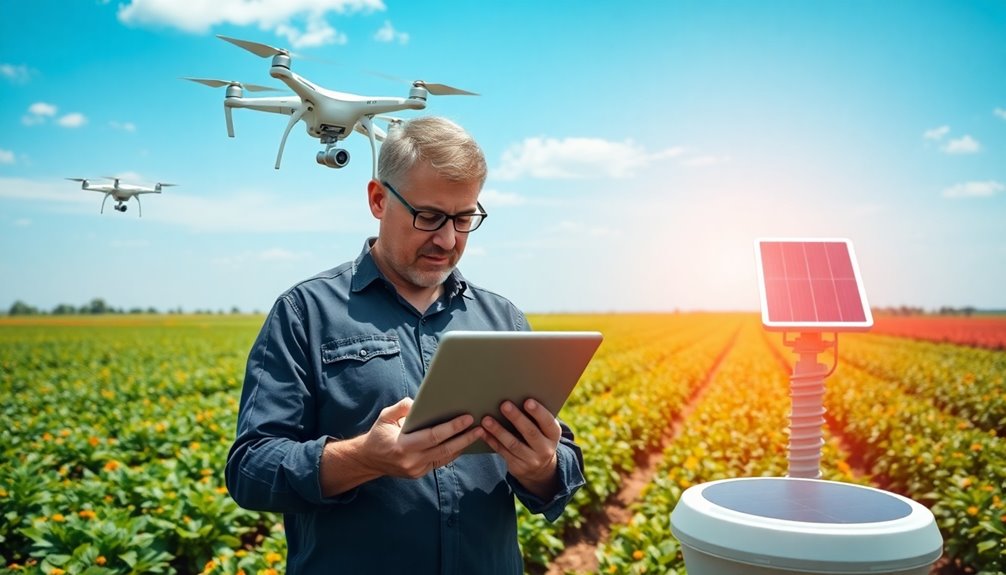
Smart devices are revolutionizing the way farmers operate, making it easier than ever to manage daily tasks and optimize productivity.
With mobile internet access, you can use crop management apps and livestock management tools right from your smartphone or tablet. This access enhances operational efficiency and allows for better resource allocation in your farming practices.
Real-time weather monitoring is another essential feature that helps you make informed decisions based on current conditions, ensuring your crops and livestock thrive.
Additionally, remote monitoring capabilities enable you to oversee equipment and farm conditions from anywhere, facilitating quicker interventions when issues arise.
Embracing these smart devices means embracing a more agile, responsive approach to modern agriculture.
Farm Business Management Software
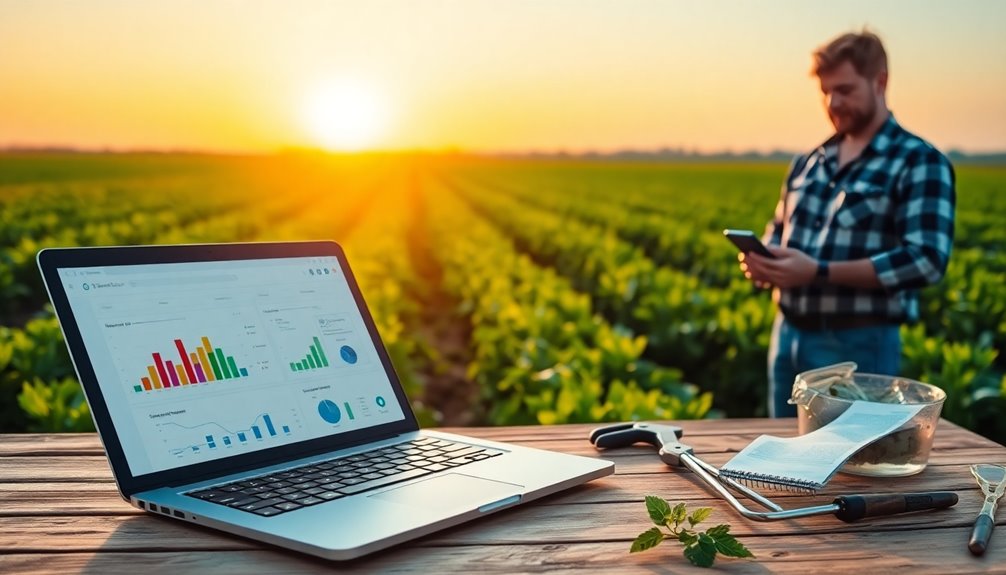
Farm business management software has become essential for modern agriculture, especially for Texas farmers looking to optimize their operations.
By embracing these digital solutions, you can greatly enhance your farm's operational efficiency. Here are three key benefits:
- Streamlined Financial Management: Track income and expenses effortlessly, simplifying bookkeeping.
- Improved Crop Planning: Utilize yield forecasting to make informed decisions about planting and harvesting.
- Efficient Inventory Tracking: Manage your supply chain more effectively, reducing waste and costs.
With the rise of subscription models, you can access advanced agricultural technologies tailored to your specific needs. Implementing such technologies can also lead to increased deployment frequency and improved overall productivity.
This shift not only reduces administrative overhead but also positions you competitively in the ever-evolving agriculture sector.
Embrace farm business management software to elevate your farming practices.
Online Agricultural Input Purchases
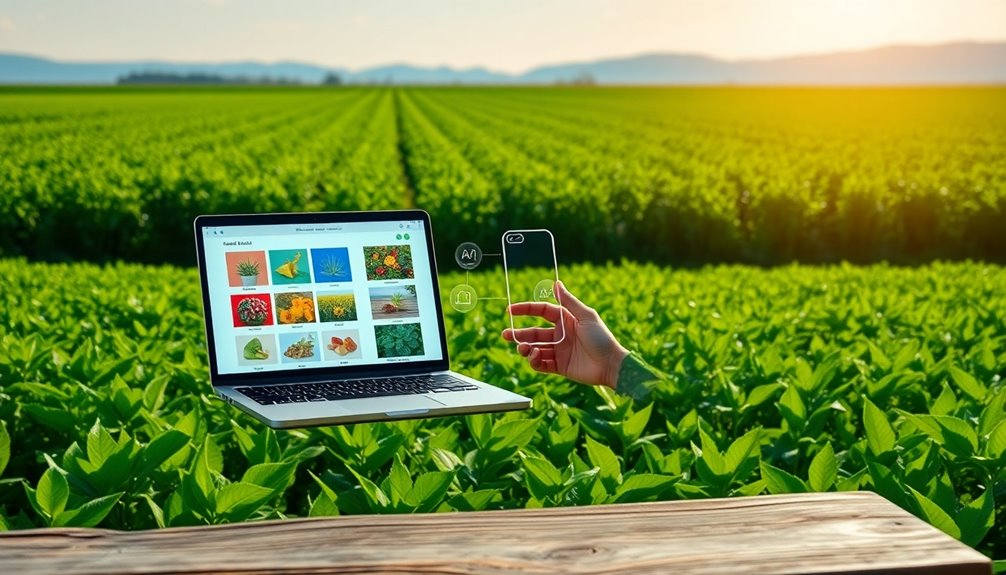
As the agricultural landscape evolves, more farmers are turning to online platforms for purchasing essential inputs like seeds, fertilizers, and pesticides. This trend reflects a transformative shift in the agricultural sector, offering convenience and efficiency that traditional methods can't match.
Texas farmers are at the forefront of this change, increasingly engaging in digital procurement for not just agricultural inputs but also veterinary supplies and machinery parts. E-commerce platforms provide easy access to a variety of products, allowing you to compare prices and make informed decisions from the comfort of your home.
While online purchasing has gained traction, there's still significant potential for growth, indicating that the future of acquiring essential resources in agriculture will likely be even more digital.
Future Trends in E-Farming
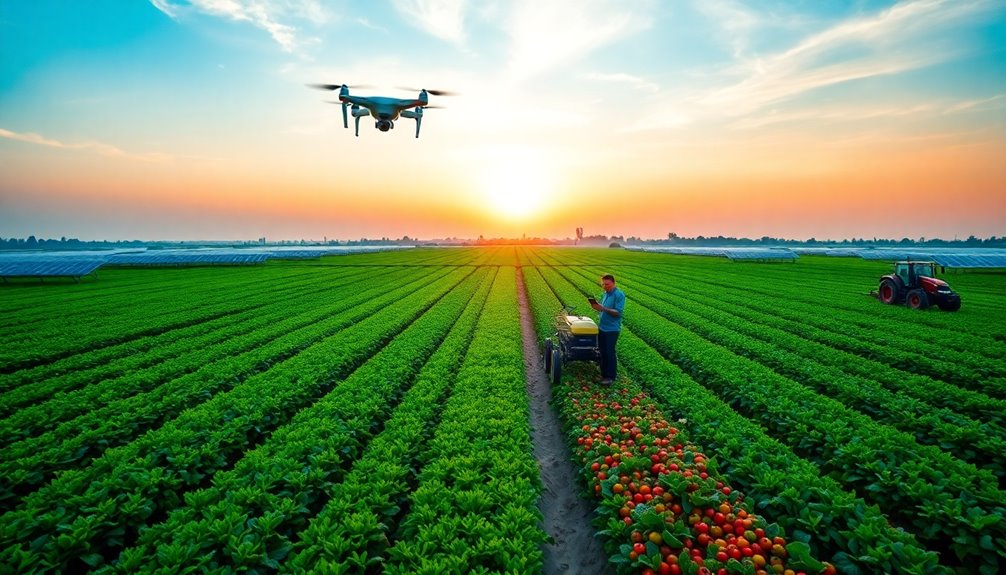
The rise of online agricultural input purchases marks just the beginning of a broader digital transformation in farming practices.
Here are three key trends shaping the future of e-farming:
- Autonomous farming technologies will enhance operational efficiency, reducing labor demands with driverless tractors and robotic systems.
- Vertical farming will revolutionize urban agriculture, allowing you to grow crops year-round in controlled environments using less land and water.
- Artificial intelligence will refine data-driven decisions, improving crop management, yield predictions, and pest control strategies.
Frequently Asked Questions
What Is E-Farming?
E-farming's all about using digital tools to boost your agricultural practices.
You can integrate IoT devices, drones, and AI to monitor your crops and livestock in real-time. This lets you make smart, data-driven decisions that enhance productivity and efficiency.
Plus, it helps you access global markets directly through e-commerce, improving your earnings.
What Is the Concept of Digital Agriculture?
Think of digital agriculture like a conductor leading an orchestra, harmonizing technology and farming for ideal results.
In this concept, you leverage advanced tools like IoT devices and drones to gather real-time data, making informed decisions that boost your crop yields.
Automation streamlines your operations, cuts labor costs, and allows for remote management.
How Was Farming Affected by the Technology Revolution?
The technology revolution's transformed farming dramatically.
You've got access to advanced tools like drones and IoT sensors, which enhance precision in your practices, boosting crop yields considerably.
With more farmers connected online, you can access real-time market data, improving your decision-making.
Smart devices and farm management software streamline your operations, making financial management and crop planning easier.
Plus, online purchasing for inputs saves you time and money, reflecting a shift in how you procure resources.
How Did the Agricultural Revolution Impact Farming?
The Agricultural Revolution was a seed planted in the fertile soil of human progress.
You shifted from roaming the wild to nurturing the earth, cultivating crops and domesticating animals. This transformation sparked a surge in food production, allowing communities to flourish.
As you embraced innovations like the plow and irrigation, farming evolved into an art, paving the way for permanent settlements and complex societies.
Your hands shaped the future, sowing the seeds of civilization.
Conclusion
So, you think farming's all about dirt and tractors? Think again! With e-farming, you can swap your pitchfork for a smartphone and call it progress. Who needs to get your hands dirty when you can just swipe right for fertilizer? As you embrace this digital revolution, just remember: the cows might not appreciate your Wi-Fi signal, but at least you'll know exactly when they're due for their next virtual vet check! Welcome to the future of farming!

